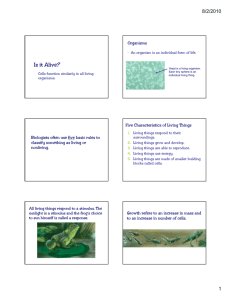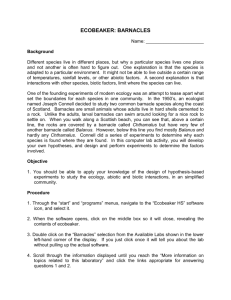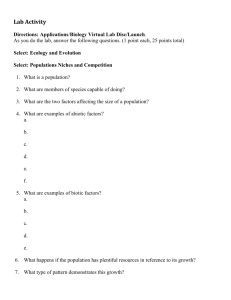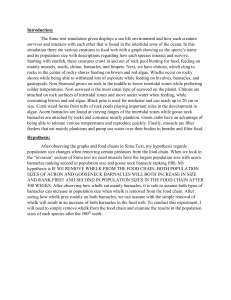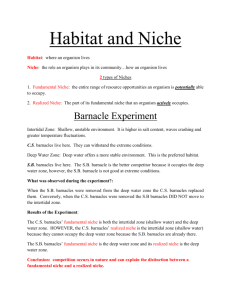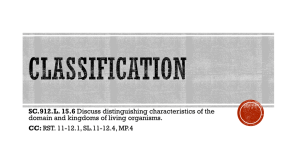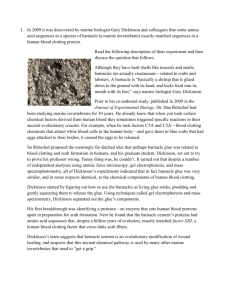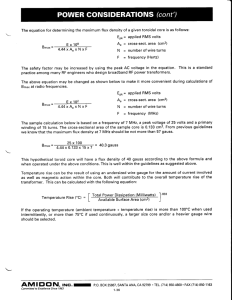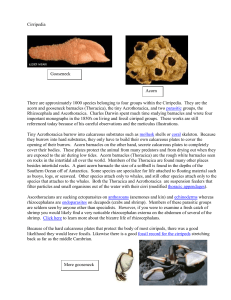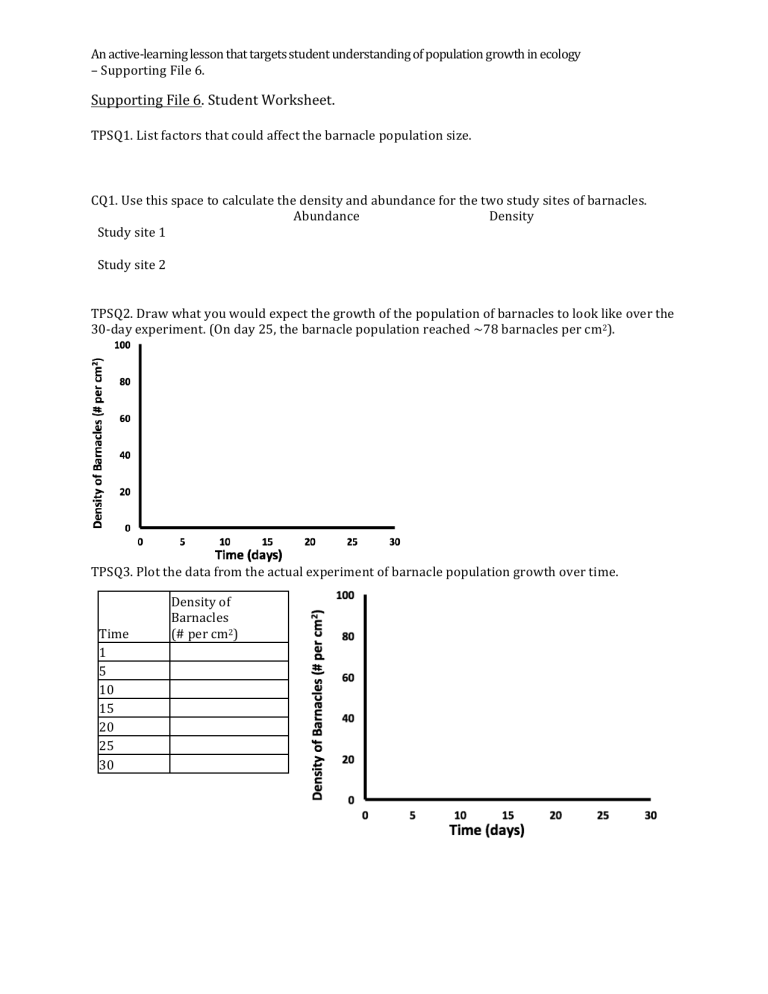
An active-learning lesson that targets student understanding of population growth in ecology – Supporting File 6. Supporting File 6. Student Worksheet. TPSQ1. List factors that could affect the barnacle population size. CQ1. Use this space to calculate the density and abundance for the two study sites of barnacles. Abundance Density Study site 1 Study site 2 TPSQ2. Draw what you would expect the growth of the population of barnacles to look like over the 30-day experiment. (On day 25, the barnacle population reached ~78 barnacles per cm2). TPSQ3. Plot the data from the actual experiment of barnacle population growth over time. Time 1 5 10 15 20 25 30 Density of Barnacles (# per cm2) An active-learning lesson that targets student understanding of population growth in ecology – Supporting File 6. CQ5. If r=2 per day per individual and K= 80 barnacles per cm2, how does increasing the population size (N) affect the population growth rate (dN/dt) in the logistic model? Population Size (N) (barnacles per cm2) 1 20 dN/dt In your own words, summarize how increasing the population size (N) affects the population growth rate (dN/dt): 40 60 70 80 TPSQ4. Use the spaces provided to describe the following populations. 1. Identify if density or abundance is shown. 2. Describe what is happening to the population (increasing, decreasing, etc.). 3. Identify if the growth curve most closely resembles linear, exponential, logistic, or other. 1. 1. 2. 2. 3. 3. 1. 1. 2. 2. 3. 3.
